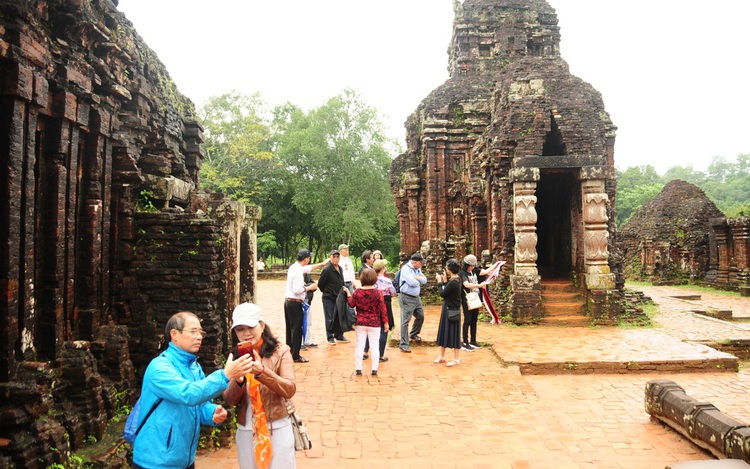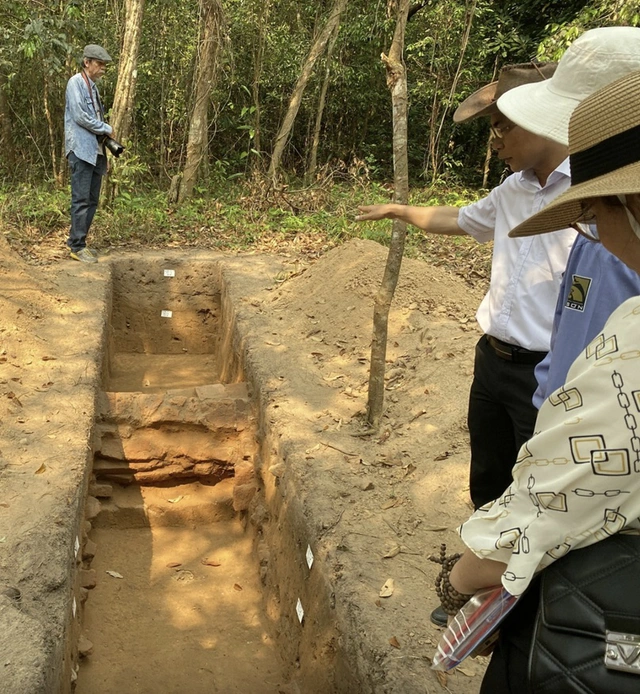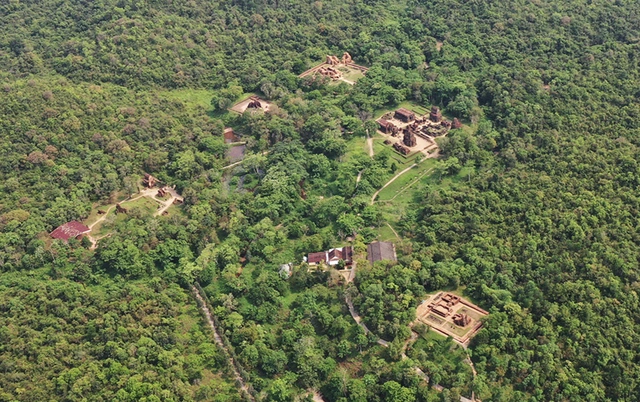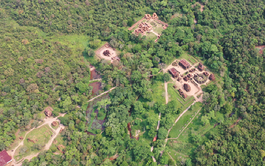
Several ancient towers at My Son are currently under restoration for tourism. Photo: B.D. / Tuoi Tre
On July 7, the My Son Cultural Heritage Management Board in Duy Phu Commune, Da Nang City announced that it was working with several agencies to initiate procedures for exploration and excavation within the UNESCO World Heritage Site.
This marks a significant step toward uncovering the remaining mysteries of the ancient Champa sanctuary.
Scope and scale
According to the ministry’s decision, the My Son Cultural Heritage Management Board will collaborate with the Institute of Archeology to conduct a survey and excavation in the area between K Tower and the central temple group.
The approved excavation covers an area of 770 square meters and will take place from July through the end of November this year.
This excavation is part of the ongoing project titled 'Archeological Research on the Entrance Pathway into the My Son Temple Complex.'
The ministry has directed all participating units to preserve archeological stratigraphy, raise awareness of cultural heritage protection, and refrain from releasing any official conclusions without prior consent from the supervising authority.
All artifacts recovered during the excavation must be carefully preserved by the My Son Cultural Heritage Management Board and cooperating agencies to prevent damage or loss.
Additionally, a detailed plan for the preservation and promotion of the artifacts’ value must be submitted to the culture minister.

An excavation pit reveals traces of an ancient ceremonial pathway. Photo: B.D. / Tuoi Tre
New findings lead the way
This excavation effort is motivated by significant findings from earlier research phases.
In two collaborative excavations conducted in June 2023 and March 2025, the My Son Cultural Heritage Management Board and the Institute of Archeology surveyed and excavated 440 square meters east of K Tower.
A key outcome was the discovery of traces of an ancient ceremonial pathway leading from K Tower eastward toward the E-F tower complexes.
This previously unknown architectural feature is a major new find in the historical context of the My Son site.
The discovery has sparked a renewed push for archaeological research to explore the system of architectural remnants surrounding K Tower.
Researchers aim to clarify whether these traces represent the royal procession route into My Son used by the ancient Cham people. Experts estimate the structures date back to the 7th to 13th centuries.
The current excavation seeks to gather field-based scientific evidence to determine the architectural layout of the pathway and its related structures.
These findings will help reconstruct the overall spatial plan of the My Son Sanctuary, contributing to future conservation efforts and the enhancement of its value in accordance with Vietnam’s Law on Cultural Heritage.

The central area of the My Son Sanctuary. Photo: B.D. / Tuoi Tre
My Son: A cultural gem
Nestled in a valley surrounded by hills and mountains in Duy Phu Commune, Duy Xuyen District, Quang Nam Province (now part of Da Nang City), the My Son Sanctuary is home to more than 70 temple towers and over 30 stone inscriptions dating back to the 7th to 13th centuries. These remain the most valuable material evidence for studying the development of Cham art and culture.
In December 1999, UNESCO designated the My Son Sanctuary as a World Cultural Heritage Site.
For decades, domestic and international archeologists and experts have dedicated themselves to restoring and reconstructing the site for tourism and cultural research.
Their efforts have uncovered many significant artifacts, some of which have been designated as national treasures and are under special protection.



Max: 1500 characters
There are no comments yet. Be the first to comment.